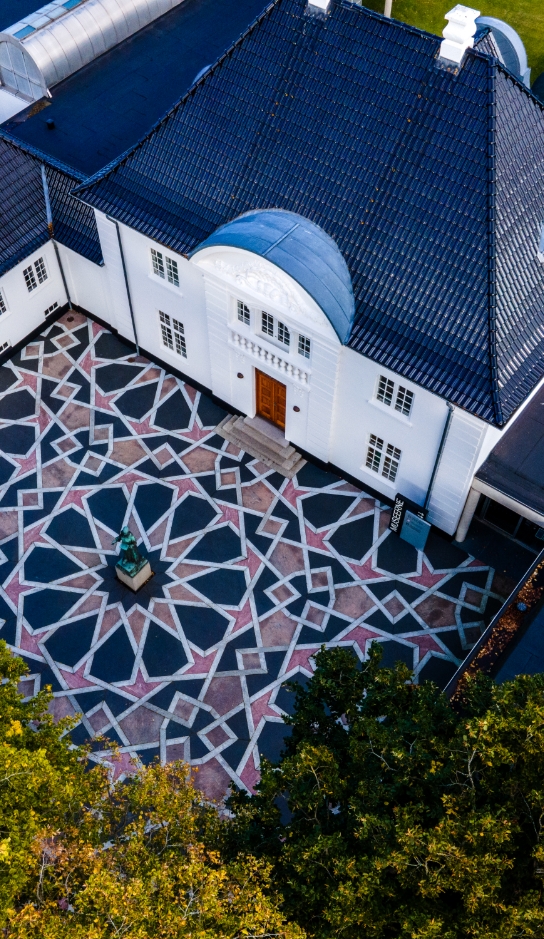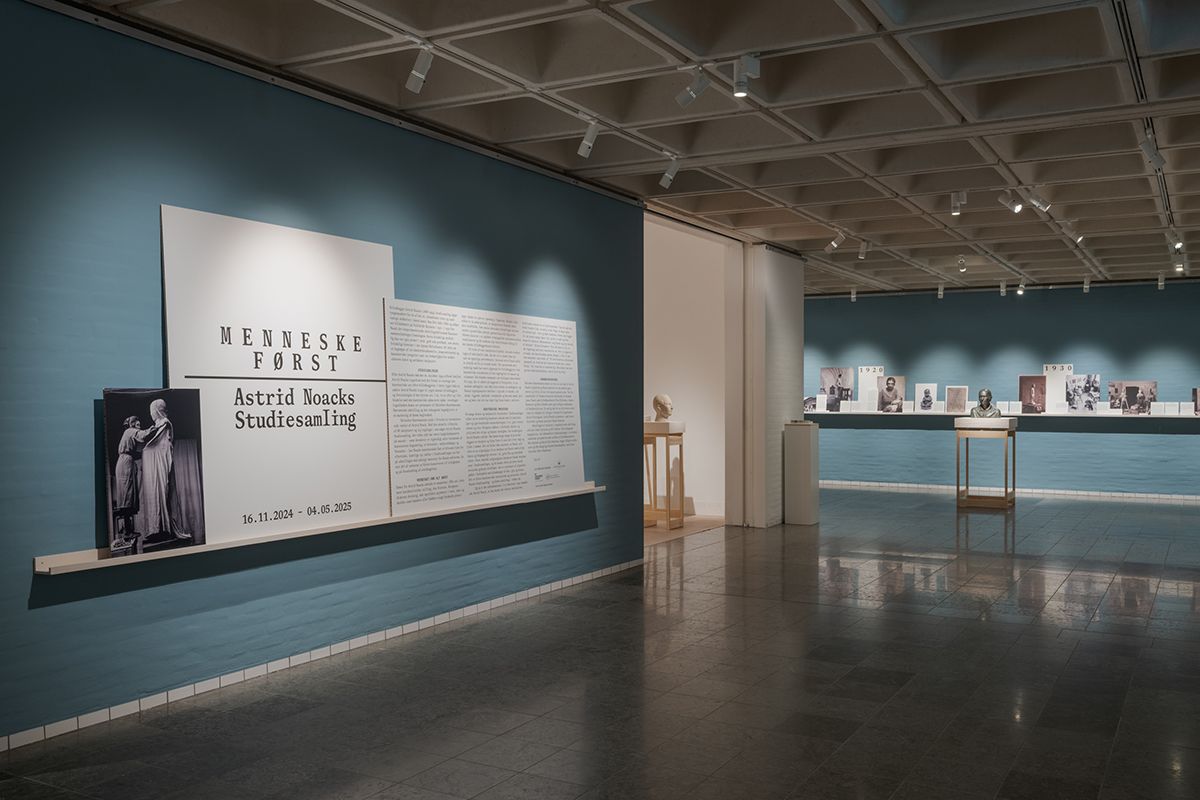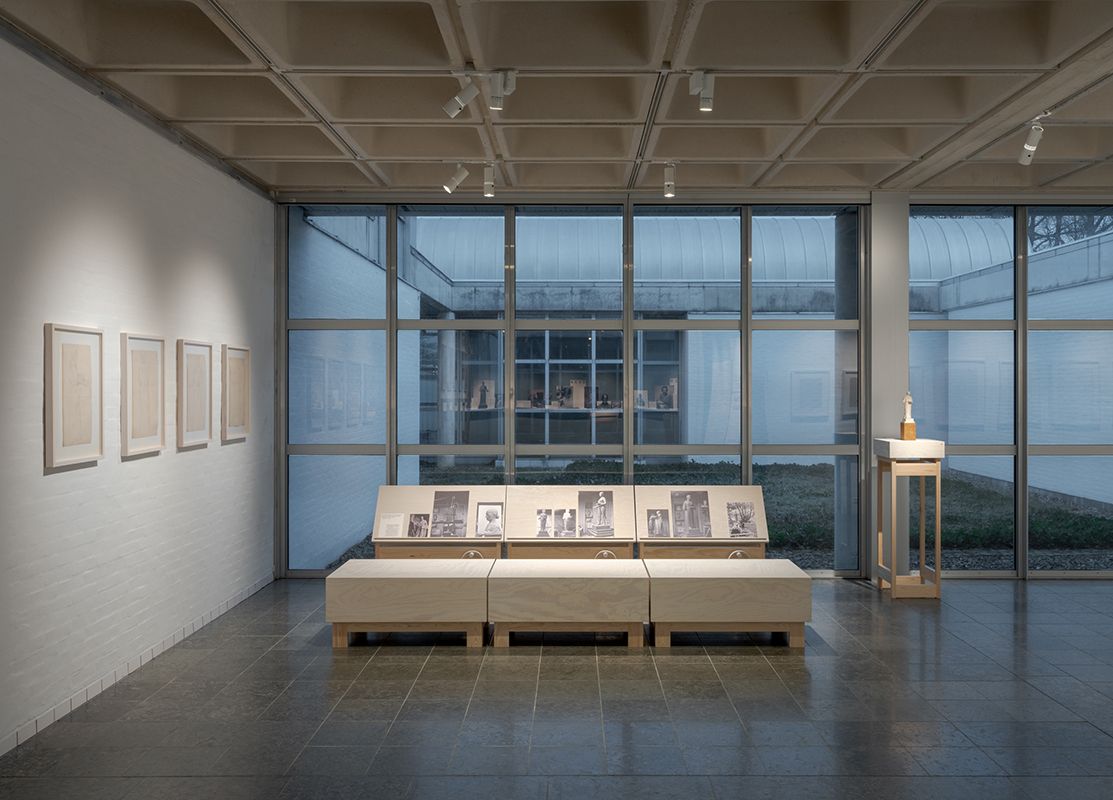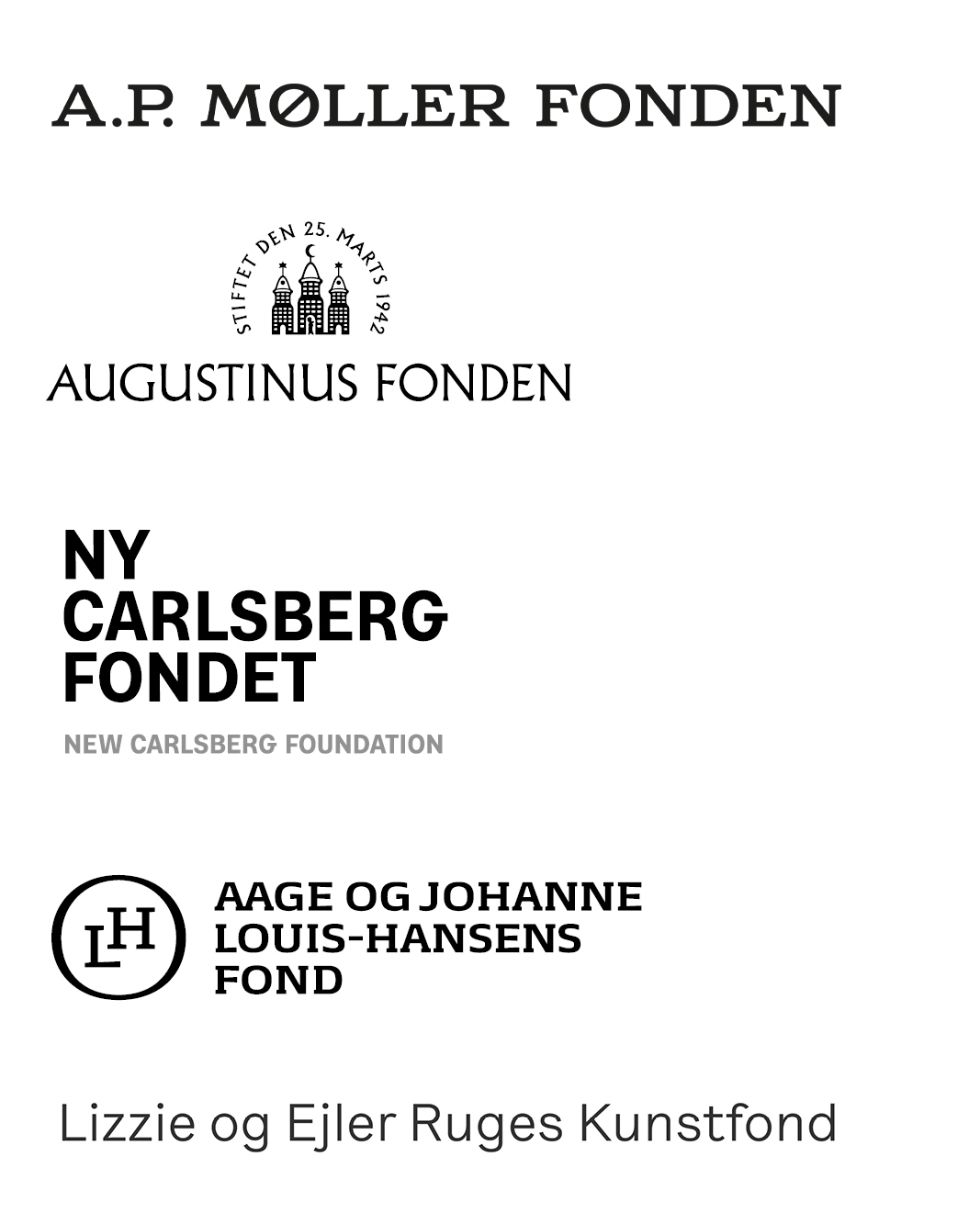Human Comes First – The Astrid Noack Study Collection
Special exhibition
For 70 years, the Astrid Noack Foundation has managed the legacy of Danish sculptor Astrid Noack (1888-1954). In 2024 the foundation is transferring this legacy permanently to Holstebro Kunstmuseum; The Astrid Noack's Study Collection. To celebrate this event, we present the collection in its entirety for the first time with the special exhibition Human Comes First - Astrid Noack's Study Collection from 16.11.2024 – 04.05.2025.
The Study Collection of sculptor Astrid Noack (1888-1954) forms the centrepiece for one of the 20th century’s great and unusual figures in Danish art. Born in Ribe, she trained as a wood carver at Vallekilde Folk High School in 1910. In 1935, Noack became the first female member of the experimental art exhibition group Grønningen, in what was then an exception to the rules of the group, and she was a pioneer once again in 2006, though posthumously, when she became the only female artist to be included in the Danish Cultural Canon – all this on the basis of her craftsmanship and uncompromising artistic integrity, as well as her both professional and intuitive understanding of, and fondness for, medieval art and the sculptures of the ancient world. These retrospective connections are transformed by Noack into pure sculpture that is full of intensity: authoritative, but never intrusive. Her sculptures possess an inner movement that bursts constructively upwards through the figure, almost bringing it to life as an enclosed form in the space.
One might at first glance see a contradiction in this coexistence of the form experiments of modernism on the one hand, and the millennial tradition of human sculpture on the other, but this is only apparent. Astrid Noack’s art unites these tendencies so seamlessly in volumes, axes and empathy that she manages not only to revitalise both poles, but also to create a new, third one: one of the most consistent expressions and independent artistic oeuvres in the history of modern Danish sculpture.
The Study Collection
Following Astrid Noack’s death on 26 December 1954, the Astrid Noack Foundation was established to safeguard her artistic legacy as a sculptor. This encompasses both the distribution of the Astrid Noack Scholarship to young Danish sculptors and the management of the artist’s physical legacy. Now, 70 years later, in connection with the ending of the artistic copyright, the Foundation is transferring this legacy permanently to Holstebro Kunstmuseum. This exhibition and the accompanying book publication mark this event.
Holstebro Kunstmuseum already owned 52 listed works by Astrid Noack, and with the addition of the 88 sculptures and 103 drawings that make up the Astrid Noack Study Collection, and which have been in storage at the museum since 1982, together with a rich archive, consisting of the artist’s book collection, a letter archive, workshop books and photographs, Noack’s artistry has now received a permanent home for posterity. All 191 works in the Study Collection can be seen here in the exhibition, along with selected materials from the Noack archives. A large number of the works have been conserved for the occasion of the transfer.
Background for the donation
The relationship between Holstebro Kunstmuseum and the Astrid Noack Foundation has developed over the years. Among the original tasks of the Foundation, one of the most important, as mentioned, was to safeguard the physical preservation of the works. Following the foundation of the Louisiana Art Museum, museum curator and art connoisseur Knud W. Jensen, who considered Astrid Noack’s work to be quite significant, purchased a number of sculptures and drawings by the artist for his museum, several of which have since been transferred to Holstebro. The Foundation was initially offered the chance to store the works at Louisiana, in continuation of the interest of Knud W. Jensen, but as the North Zealand art museum expanded and began to orient itself more towards the international art scene, it had a need to free up space.
In 1964, the Foundation was provided with premises at Bordings Free School, which had recently acquired buildings on Øster Søgade in Copenhagen. However, the Free School eventually also expanded. Holstebro Kunstmuseum’s first director, the art historian and writer Poul Vad (1927-2003), had previously suggested that the museum would be interested in acquiring the Foundation’s Noack archives and works, and a central place for the representation of Astrid Noack in Holstebro Kunstmuseum had already been planned from the start of the collection in 1965.
In addition to these, several Noack works stored at Louisiana were as mentioned transferred to Holstebro in 1976, and all these circumstances together meant that the final choice fell on the west Denmark town. The Study Collection – a designation that the museum assigned to the Foundation’s Noack collection and archives in order to distinguish these from the museum’s own collection – arrived at the museum under the auspices of the museum’s second director, Jesper Knudsen. The intention, right from the start, was that the art museum would later take over the many works and the archive in connection with the ending of copyright. This was originally set to be in 2004, but after a legislative change along the way, the year of the ownership transfer ended up being the 70th anniversary of Astrid Noack’s death, 2024.
The human being first and foremost
The subject of Astrid Noack’s work is the human being – often seen in its most characteristic position, the frontal view. A discreet twist of the body, imperfect asymmetry of the ears, eyes and shoulders, and slightly displaced positions of the hands or feet create a perceived tension in the figures. Noack’s instruments are so understated that they cause the sculptures to appear all the more pure, dignified and powerful – like almost abstract narratives about the basic human conditions, expressed through classical figuration. Astrid Noack’s contribution to the history of Danish sculpture thus occupies an unusually effective intermediate position between the traditional and the modern.
The many sketches and preparatory works for Noack’s sculptures in the Study Collection testify to the work of a tireless artist with her material: Again and again, the human body is translated into clay, plaster, bronze, cement and stone. The figures are produced in varying scales, always with the calm and humane dignity that characterises Astrid Noack’s work. She could spend years completing a sculpture and finding its perfect weight and volume in the space. Neither was it unusual for Noack, even after an original plaster for a sculpture had been cast from the first complete and perishable clay version, to grab her file and continue working. These ‘original plasters’ predominate among the sculptures in the Study Collection, and can usually be recognised by their characteristic yellowed surfaces – the result of release agents applied when making casts of them in plaster and bronze. It is these artistic traits and processes to which the Astrid Noack Study Collection – and this exhibition – bear witness.
Despite the clarity of her sculptures, including the toning down of individual features unless they were actual portrait busts, Astrid Noack always preferred to work from a life model. The immediate human encounter has been crucial for the sculptor in the artistic translation of her observations into masses and volumes. The famous 1939 monument to her colleague Anna Ancher, created on the basis of photographs, is a notable exception, but nevertheless an exception. Noack’s drawing universe is richly populated by standing, sitting, lying, kneeling, stretching and carrying men, women and children, all of whom posed right in front of her in the studio.
Her work ethic was also noteworthy. In an interview in 1951, Astrid Noack remarked that she felt she had it easier than painters, precisely because her work was so physically demanding: “I also have the advantage over, for example, a painter, because so much manual work is involved – pure craftsmanship. The stone must be carved, which takes many hours of hard labour, and this is healthy and conducive to the sense of balance. The craftsperson in me delights in that part of the work.” She continues: “When it becomes easy, it’s worthless, from an artistic point of view. Each new work is a battle that you have to fight with humility while standing and recognising your powerlessness and how terribly far there is yet to go – and yet you love the battle. It’s like with people you care about. ”To the interviewer’s concluding question about what has inspired her most, Noack replies: “Everything that is human. But perhaps most of all Gothic medieval sculpture, which is so pristine and peaceful.”
Noack and Holstebro
In 1965, the aforementioned Poul Vad was given the task of drawing up guidelines for the establishment of an art collection at national level in Holstebro – guidelines on which the museum has based its work to this day. In the original plan, Vad began with the fact that one of the special functions of the future Holstebro Kunstmuseum collection would be to “concentrate on a core group of relatively few painters and sculptors, who in turn will be given really rich representation, as well as a number of artists outside of this core who will each be represented by one, two or three works. The possibility for artistic experiences and acquiring the language of painting and sculpture is very much supported when you are able to see different artists in ‘whole figure’ and really receive a good sample of their life’s work.”
Vad believed the collection should show “examples of the best of Danish art in all its aspects from the period in question”. He selected five artists to provide the backbone, i.e. the core of the collection: Astrid Noack, Lauritz Hartz (1903-1987), Henry Heerup (1907-1993), Ejler Bille (1910-2004) and Erik Thommesen (1916-2008). Like the painters Hartz and Heerup, Noack was figurative in her expression. She created a strong, personal art that drew upon tradition, but she found her own path in modern sculpture in an artistic trajectory that deviated from that of the avant-garde tendency that entered Danish art in the mid-1930s, and which counted Ejler Bille among its pioneers.
Noack also occupies a significant place in Holstebro’s urban space. On the forecourt of the art museum stands one of the above-mentioned major works by Noack, namely the artist’s unusually monumental portrait of Anna Ancher (1939). Further away from the museum is the work Kneeling Boy (1942), erected in 1966, while Woman with Cloth (1944) rises up beside the Vegen River.
Preservation and dissemination
The special exhibition Human Comes First - The Astrid Noack Study Collection rests on an extensive conservation program, which has made it possible to exhibit many of the works for the first time - the original plaster cast for Noack's famous statue of Anna Ancher (1939), for example, and a total of three different draft versions in plaster for Young Man Planting a Tree (1943-52). Also, none of the drawings have previously been exhibited.
The exhibition's staging, podiums and furnishings is designed by architect Johan Carlsson, JAC Studios and crafted by the local funiture company Rolighed Humania. The furnishings will subsequently be reused in a permanent presentation of the Study Collection.
Film about the conservation work
Conservator Therese Gry Asla from The Danish Art Conservation Center, who specializes in sculpture, has been working on preserving and stabilizing many of the sculptures in the study collection since the autumn of 2023. As such, she has gained special insights and knowledge of Astrid Noack's techniques and processes which is made accessible in the exhibition through the documentary film, Reversibel - Konserveringen af Astrid Noacks Studiesamling.
243 works by Noack in one book
Accompanying the exhibition, and to mark the addition of the 191 work in the study collection to the 52 works by the artist already owned by Holstebro Kunstmuseum, the museum is publishing a fully illustrated book of all 243 works by Astrid Noack now in the collection. The book is made in collaboration with Spine Studio, and the new photos of the entire collection are by photographer Lars Bay.
In addition to the works, the book contains a biography and three texts that contextualize Noack's works and practice in various ways. The contributors are; visual artist and former professor at the Academy of Fine Arts in Copenhagen, Martin Erik Andersen, who writes about Noack's special use of plinth geometries; art historian and expert in monuments, Mette Haakonsen, who sheds new light on Noack's Anna Ancher statue; and sculptor and retired professor at the Academy of Fine Arts in Copenhagen, Hein Heinsen, who takes his readers through the wide range of Noack’s artistic vocabulary.
The Astrid Noack's Foundation
The Astrid Noack Scholarship Foundation was founded by the artist's family in 1955, the year after the artist's death, with the aim of managing the legacy of Noack. This has involved the ownership of the study collection, which is now being transferred to the museum, but it also involves administrating the Astrid Noack Scholarship.
The honorary grant is awarded to young, Danish sculptors, and thus works to support the development of the Danish sculpture tradition. The Astrid Noack Foundation has been awarding the grant since 1956. The first recipient was the sculptor and close friend of Astrid Noack, Erik Thommesen (1916-2008). In 1983, the scholarship was awarded at the Holstebro Kunstmuseum for the first time, and from 1985 the scholarship recipients have also had the opportunity to present works or exhibit at the museum.
The board of Astrid Noack's Foundation consists of chairman Janus Noack and visual artists Ellen Hyllemose, Anders Bonnesen and René Schmidt.
Partners
Holstebro Kunstmuseum would like to warmly thank the Astrid Noack Foundation and the Noack family for the marked generosity and trust they have shown the museum over the years. We would also like to thank the Foundation’s Board of Directors, consisting of Chairman Janus Noack and visual artists Ellen Hyllemose, Anders Bonnesen and René Schmidt, as well as former members of the Board. Special thanks for making their extensive knowledge available are due to Astrid Vestergaard, former chair of the Foundation and Astrid Noack’s grandniece, and to art historian and Noack specialist Hanne Pedersen.
The exhibition has been realised in collaboration with exhibition architect Johan Carlsson and JAC Studios. The accompanying book publication, which documents the Study Collection in its entirety, includes contextualising articles by the visual artists Hein Heinsen and Martin Erik Andersen, both former professors at the Royal Danish Academy of Fine Arts, as well as by the art historian Mette Haakonsen.
Our thanks to
When it becomes easy, it’s worthless, from an artistic point of view. Each new work is a battle that you have to fight with humility while standing and recognising your powerlessness and how terribly far there is yet to go – and yet you love the battle. It’s like with people you care about.
Interview with Astrid Noack, 1951




